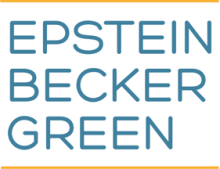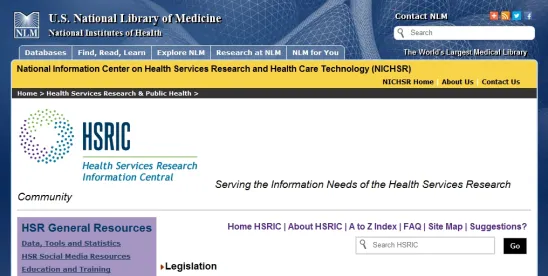On February 7, the National Institutes of Health (“NIH”) issued a Notice (NOT-OD-25-068) entitled “Supplemental Guidance to the 2024 NIH Grants Policy Statement: Indirect Cost Rates” (the “Notice”), though which NIH announced the adoption of a uniform indirect cost rate (“IDC Rate”) of 15% applicable to all new grants, and to existing grants awarded to Institutions of Higher Education (“IHEs”) – encompassing the vast majority of postsecondary educational institutions in the United States – as of the date the Notice was issued (February 7, 2025). The Notice also indicates the policy will apply for “all current grants for go forward expenses from February 10, 2025 as well as for all new grants issued.”
The Notice, as written and supported by underlying regulations, appears to apply the 15% IDC Rate to existing awards only for IHE recipients (see the Notice’s acknowledgment that “NIH may deviate from the negotiated rate both for future grant awards and, in the case of grants to institutions of higher education (“IHEs”), for existing grant awards. See 45 CFR Appendix III to Part 75, § C.7.a; see 45 C.F.R. 75.414(c)(1).” (emphasis added)). However, there is some ambiguity in the wording and existing non-IHE awardees should be prepared for a possibly broader read by the NIH. The IDC Rate covers “facilities” and “administration” costs of the grantee institution. As a general matter, an institution’s IDC Rate is pre-negotiated and although the NIH cited 27-28% as the average negotiated IDC Rate, it has been reported that many institutions negotiate upwards of 50-60%, with some even as high as 75%.
The NIH justified its action under 45 C.F.R. § 75.414(c)(1), pursuant to which “[a]n HHS awarding agency may use a rate different from the negotiated rate for a class of Federal awards or a single Federal award only when required by Federal statute or regulation, or when approved by a Federal awarding agency head or delegate based on documented justification as described in paragraph (c)(3) of this section.” Paragraph (c)(3) goes on to require that “[t]he HHS awarding agency must implement, and make publicly available, the policies, procedures and general decision-making criteria that their programs will follow to seek and justify deviations from negotiated rates.” Presumably the NIH is taking the position that this Notice serves as the publication of the criteria it will follow (and is following in real time through the Notice) to seek and justify this likely downward deviation from already negotiated rates held by grantee institutions for existing awards.
The NIH Notice was challenged in two different motions for temporary restraining orders (“TRO”): one filed by a collection of State Attorneys General (see Commonwealth of Massachusetts vs. National Institutes of Health, Case # 1:25-cv-10338) and the other by the Association of American Medical Colleges and other similar associations (Case # 1:25-cv-10340). The motions are based on several similar arguments: (1) the indirect rate change is arbitrary and capricious, (2) the rate change violates Section 224 of the Further Consolidated Appropriations Act, 2024, (3) NIH failed to comply with its own regulations for indirect cost rates, (4) NIH has no authority to make retroactive changes to indirect cost rates, and (5) notice and comment procedures are required because this is a substantive change because it imposes a new obligation that did not exist previously.
On February 10, the District Court for the District of Massachusetts granted the State Attorneys General’s request and entered a TRO blocking the implementation, application, and enforcement of the Notice within the Plaintiff States (i.e., within Massachusetts, Illinois, Michigan, Arizona, California, Connecticut, Colorado, Delaware, Hawaii, Maine, Maryland, Minnesota, Nevada, New Jersey, New Mexico, New York, North Carolina, Oregon, Rhode Island, Vermont, Washington and Wisconsin) until further order is issued by the Court. A hearing date has been set for February 21, 2025 at 10 a.m.
In a separate ongoing litigation, State of New York v. Trump (C.A. No. 25-cv-39-JJM-PAS), the District Court of Rhode Island issued a TRO on January 31, 2025, prohibiting the Defendants from freezing federal funding based on the Trump administration’s Executive Orders or the OMB Memorandum M-24-13 dated January 27, 2025 (“Temporary Pause of Agency Grant, Loan, and Other Financial Assistance Programs”). On February 10, 2025, the same day as the motions to block the NIH’s uniform IDC, the judge in that matter, Chief Judge John J. McConnell, Jr. issued an Order to enforce the funding-freeze TRO in response to Plaintiff’s emergency motion, indicating that the Defendants must take certain steps to both restore funding and refrain from further violation of the TRO. Some media outlets have reported this Order as also blocking the NIH’s Notice related to IDCs. It is unclear at this time whether the NIH’s action in the Notice could be deemed to fall within the scope of the Executive Orders or the OMB Memo, and it does not appear this argument was made in the two motions for TROs brought against the NIH on February 10, 2025. That said, it is possible a cognizable claim could be made that the NIH’s actions constitute an attempt to cut off funding under another “name or title,” which was explicitly incorporated into the TRO issued by Judge McConnell (“Defendants shall also be restrained and prohibited from reissuing, adopting, implementing, or otherwise giving effect to the OMB Directive under any other name or title or through any other Defendants (or agency supervised, administered, or controlled by any Defendant), such as the continued implementation identified by the White House Press Secretary’s statement of January 29, 2025.”).
Given the NIH’s Notice and the various ongoing litigations, Institutions will also have to carefully evaluate their approach to submitting new grant applications and administering current awards.









 />i
/>i
